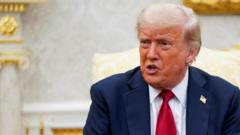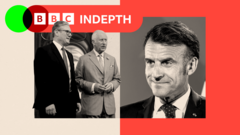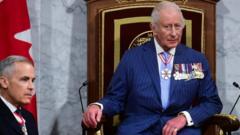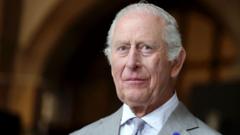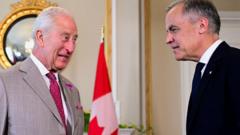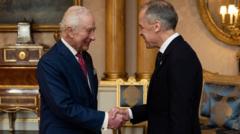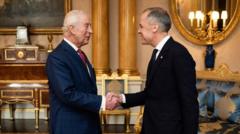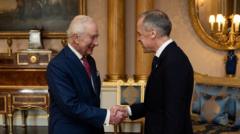The royal train has served Britain's monarchs for over 150 years, symbolizing luxury and modernity, but has now been retired due to financial considerations.
The End of an Era: Britain's Royal Train Retired

The End of an Era: Britain's Royal Train Retired
A Symbol of British Royalty and Luxury Concludes Its Journey
Britain's illustrious royal train, which has been a cherished asset of the British monarchy since its inception, is being retired as part of a cost-cutting effort, marking a significant moment in royal history. This remarkable mode of transport for the royal family dates back to Queen Victoria, who made the first royal train journey in 1842. Initially hesitant due to fears about train travel, she eventually recognized its advantages, describing it in her journal as delightful and quick.
The royal train has provided the monarchy with a sense of elegance and tradition over the years. Commissioned by Queen Victoria, the original set of private rail cars was lavishly decorated—featuring opulent gold and blue silk interiors—and served until the early 20th century. Even then, the customs and rituals surrounding official train journeys, such as dressing the headlights with crowns or maintaining strict dining etiquette, offered a glimpse into the pomp of royal life.
Though the discontinuation of the royal train could aid the monarchy's finances, it signals the end of an era that connects the present monarch, King Charles III, to his historic lineage. As the British royal family adapts to changing times, the departure of such a significant symbol prompts reflections on the evolution of royal customs and their relevance today. The train’s retirement may be seen as a farewell to a unique chapter in British history, laden with richness and nostalgia, yet calls attention to future innovations in how royalty engages with the public and travels the nation.
The royal train has provided the monarchy with a sense of elegance and tradition over the years. Commissioned by Queen Victoria, the original set of private rail cars was lavishly decorated—featuring opulent gold and blue silk interiors—and served until the early 20th century. Even then, the customs and rituals surrounding official train journeys, such as dressing the headlights with crowns or maintaining strict dining etiquette, offered a glimpse into the pomp of royal life.
Though the discontinuation of the royal train could aid the monarchy's finances, it signals the end of an era that connects the present monarch, King Charles III, to his historic lineage. As the British royal family adapts to changing times, the departure of such a significant symbol prompts reflections on the evolution of royal customs and their relevance today. The train’s retirement may be seen as a farewell to a unique chapter in British history, laden with richness and nostalgia, yet calls attention to future innovations in how royalty engages with the public and travels the nation.


